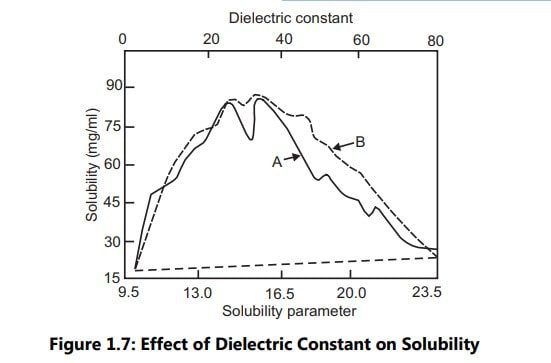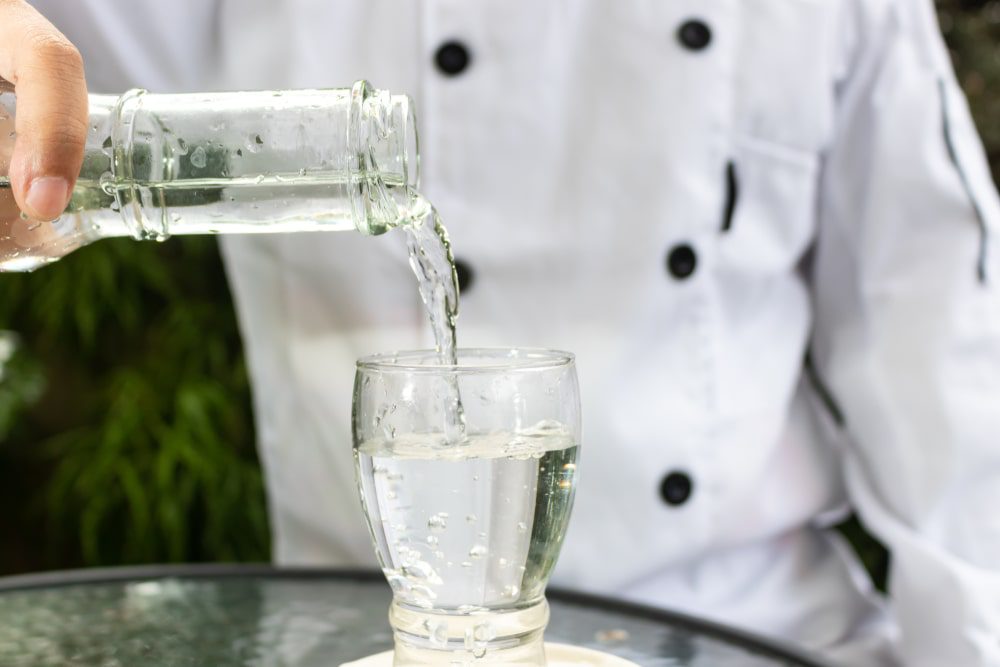Binary Solutions
It is very common for two or more liquids to be mixed to make a solution. Therefore, we need to know what liquids can be mixed without precipitation. Examples of pharmaceutical solutions of liquids dissolved in liquids are hydroalcoholic solutions, aromatic waters, spirits, elixirs, lotions, sprays, and some medicated oils that contain a mixture of two or more miscible oils. When two or more liquids are mixed, they can be completely miscible, partially miscible, or practically immiscible. Completely miscible liquids mix uniformly in all proportions and, hence, do not get separated. Partially miscible liquids form two immiscible liquid layers, each of which is a saturated solution of one liquid in the other. Such liquid pairs are called conjugated liquid pairs.
The mutual solubility of partially miscible liquids, being temperature-specific, is affected by changes in temperature. For binary-phase systems, such as the phenol-water system, the mutual solubility of two conjugate liquid phases increases with an increase in temperature called the conjugate temperature, whereas above this temperature they are soluble in any proportion. Other examples of partial miscibility include conjugate liquid pairs of nicotine and water, ether and water, and triethnolamine and water. Immiscibility refers to those systems that do not mix at all, such as water and liquid paraffin or water and oil. The dielectric constant of a substance also affects its solubility (Fig. 1.7).

It is a known fact that the polarity of a solvent is dependent on the dielectric constant. Also, remember that LIKE DISSOLVES LIKE. The influence of a foreign substance on a liquid-liquid system is like the idea of a three-component system in the phase rule. Ternary systems are produced by the addition of a third component to a pair of partially miscible liquids to produce a solution. If an added component is soluble in only one of the two components or if its solubility in the two liquids is markedly different, the mutual solubility of the liquid pair is decreased. If the added solute is roughly soluble in both liquids, approximately to the same extent, then the mutual solubility of the liquid pair is increased. This is called blending. An example of this is when succinic acid is added to the phenol-water mixture. The succinic acid is soluble or completely miscible in each phenol and water therefore, it causes a blending of the liquids making the mixture one phase.
Also read: Factors influencing solubility of drugs
Ideal Solutions
Dilute solutions consist of a negligible amount of solute compared to pure solvents. These solutions are referred to as ideal solutions. An ideal solution is one in which there is no change in the properties of the components other than dilution when they are mixed to form the solution. No heat is evolved or absorbed during the solution formation. The final volume of the real solution is an additive property of each individual component. In another way, it can be stated as a solution that shows no shrinkage or expansion when components are mixed to form a solution. Ideal solutions are formed by mixing different substances having similar properties, and therefore there is complete uniformity of attractive intermolecular forces. For example, when equal amounts of methanol and ethanol are mixed, the final volume of the solution is the sum of the volumes of the methanol and ethanol.
Solutions used in pharmacy consist of a wide variety of solutes and solutions. The basis of solubility and solution theory is based on ideal solution. In ideal solution there is a complete absence of attractive or repulsive forces and therefore the solvent does not affect solubility. The solubility in this case depends on temperature, the melting point of solute and the molar heat of fusion (∆Hf). In ideal solution heat of solution is equal to ∆Hf . Therefore solubility in an ideal solution can be expressed by

Where Xi2 is the ideal solubility in terms of mole fraction, R is gas constant; T is the temperature of solution and To is the temperature (Kelvin) of solute. The equation 1.4 can be used to calculate the molar heat of fusion by plotting the log solubility versus the reciprocal of absolute temperature which results in a slope of − ∆Hf/2.303R. Unfortunately, most of the solutions are non-ideal (real) because there may be interaction between solute and solvent. In these solutions mixing of solute and solvent can release or absorb heat into or from surroundings, respectively. While describing non-ideal solution, activity of solute must be considered. Activity of solute is defined as concentration of solute multiplied by the activity coefficient (X2). The activity coefficient is proportional to the volume of solute and to the fraction of the total volume occupied by the solvent. On substitution these values in
equation (1.4) we get;

As activity approaches unity, the solution becomes more ideal. For example, as a solution becomes more dilute the activity increases, and the solution becomes ideal. The log of activity coefficient (log X2) is the term that considers the work of solubilization, the volume of solute and the volume of solvent. The work of solubilization includes the intermolecular forces of attraction, removing remove molecules from the solid and integrating into the solvent. One more term solubility parameter (γ2) which is a measure of cohesive forces between like molecules is considered for solubility. It is expressed by the following equation.

Where ∆Hv is the heat of vapourization of solute, V1 is volume/mole of solute as a liquid, V2 is the molar volume of solute and φ1 2 is the volume fraction of solvent, T is the temperature (Kelvin) and R is gas constant.
